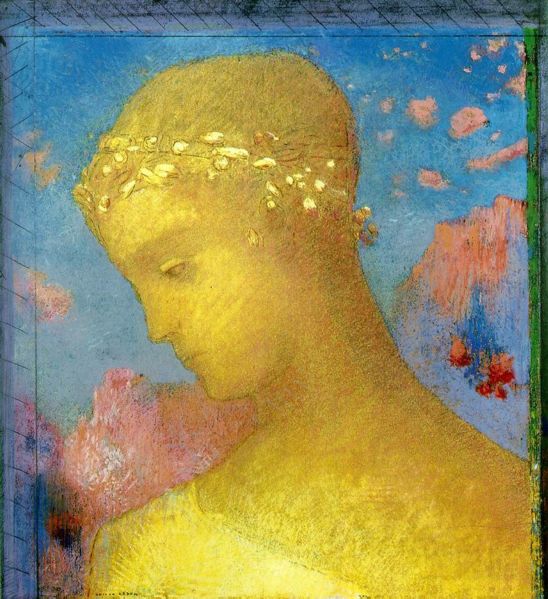
LIFE AS MYTH
![]()
JOURNAL
![]()
JOURNAL 2011
![]()
Life as Myth
Naming a life
![]()
WINTER 2011
A prince of dreams
![]()
LIFEWORKS
![]()
ATLAS
![]()

WINTER 2011
A PRINCE OF DREAMS
Beatrice. Odilon Redon. 1897. Fine Arts Museum of San Francisco. Beatrice is the legendary muse and great love of the Italian poet Dante Alighieri.
Odilon Redon was an intuitive and introspective artist whose highly developed internal sources fed his art. Explaining his creative process in his journal A Soi-même (To Myself), Redon states:
I have often, as an exercise and as sustenance, painted before an object down to the smallest accidents of its visual appearance; but the day left me sad and with an insatiate thirst. The next day I let the other source run, that of imagination, through the recollection of the forms and I was then reassured and appeased.
The canon of his work presents in two distinctly different forms. The first half, until roughly the mid-1890's, is comprised of charcoals and lithographs. These pieces explored unusual and often grotesque subjects, including floating eyes, decapitated heads and shackled angels. Since Redon was an intensely private man, his work remained relatively unknown until the publishing of J. K. Huysmans's novel À rebours (Against Nature) in 1884. The book's decadent hero collected Redon drawings and this mention brought considerable the artist recognition and attention.
From 1886-1895, events in Redon's life laid the groundwork for the transformation of both the artist and his art. He and Camille Falte, his wife, had their first child, Jean, in May 1886. When Jean died the following November, the acutely sensitive and artistic Redon entered a prolonged period of depression and spiritual crisis. His melancholy further deepened during a serious illness in the mid-1890's.
His artwork during this ten year period provides an intimate window into his healing, as he moves from macabre-themed charcoal sketches to mythological and floral works bathed in luminous color. His previously morose view of life, anchored in some way perhaps to his solitary childhood, transformed into a more joyful one and this happier maturity translated on to the canvas. Some art historians credit the birth of his second son Ari in 1889 as being an important factor in Redon's eventual recovery.

